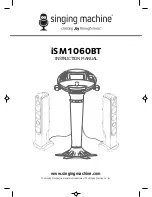
14
EN
A “V”weld
Separate joint to be welded
Welded joint
An angle between 45° and 90° must be chosen, according to sheet to be
welded. Width of opening “B” is limited
to about 30 mm in case of welds
with only one welding layer, otherwise the operator would not be able to
perform the necessary welding pressure.
To obtain a good heating and welding, it is necessary to prepare, on top part,
a fissure 2 mm wide. If this dimension cannot be respected, it is necessary
to do something, like for example use some more hot air or make another
layer of weld.
B Double “V” weld
Preparation of edges without fissure
Joint to be welded
Welded top part
Preparation of edges with fissure
Top part welded
Down part welded
For instructions on preparation of the edges before welding, see section
A.
C “T” joint with corner weld
Joint to be welded
Welded joint G = 10 mm
For instructions on preparation of edges before welding, see section
A.
Projecting part
G
is to lay down and drive welding shoe.
D K-weld
Joint to be welded
Schweißnaht
For instructions on preparation of edges before welding, see section A.
Projecting part G is to lay down and drive welding shoe.
E Overlapping Joint
Welded joint
When performing this kind of weld, in order to be able to heat and weld
properly from one part to the other, it is necessary to leave a little fissure,
which depends from thickness of the sheet and not smaller than 1 mm (A).
F External corner weld
Teflon shoe on demand is required
Joint to be welded G
Joint
Teflon shoes available for G-thickness
PREPARATION OF SURFACES TO BE WELDED
Areas interested in the preparation of the edges
Surfaces which are going to be welded and surfaces near the area of welding
string, are treated and scraped just before welding. For this purpose, only
use suitable tools. Parts which surfaces have been damaged by atmospheric
or chemical agents, must be scraped until reaching the intact zone; this
situation often occurs when repairing something It is important to avoid
using solvent detergents or detergents that might deform the material.
In order to re-equilibrate possible differences in temperature between
materials to be welded, it is necessary to stock them in working place, for a
period of time necessary for them to become of same characteristics,
before performing any welding
GOING OVER THE JOINT AGAIN
Welds should be done in such a way that do not need any further
treatments.
In case one wants to go over the weld again, it is necessary to make sure
that the previous weld is without any imperfection. When going over the
weld again, it is necessary to avoid notches.
SAFETY AND QUALITY OF THE JOINT
When making a joint, it is necessary to reach value of resistance fixed in the
calculation of the welded material.
From DVS 2205 regulation it is possible to verify data on the resistance that
can be obtained on the welded joints.
It is necessary to consider that the values shown in the regulation, are
referred to a “V” weld. In case of other
types of welds, it is necessary to
consider lower resistance.
Regulations DVS 2203 and 2206, describe indication about tests on the
welded joint and welded structures.
A fast test would be the folding which is described on the DVS 2203.















































